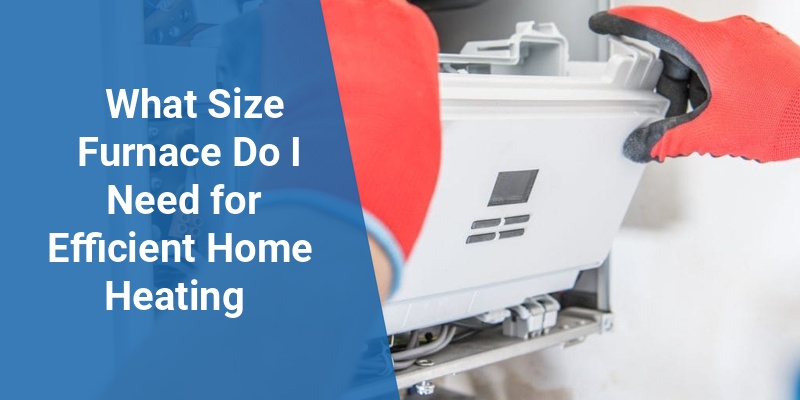Selecting the correct furnace size is crucial for ensuring optimal heating efficiency and comfort in your home. A furnace that’s too small will struggle to maintain a comfortable temperature, while one that’s too large will cycle on and off frequently, wasting energy and causing uneven heating. This guide will help homeowners in the United States understand how to determine the right furnace size based on key factors such as home square footage, insulation, climate, and heating capacity requirements.
| Factor | Description | Influence on Furnace Size |
|---|---|---|
| Home Square Footage | Total heated area in square feet | Primary indicator of furnace capacity needs |
| Climate Zone | Regional outdoor temperature range | Colder regions require larger furnace output |
| Insulation Quality | Effectiveness of home insulation materials | Better insulation reduces heating demand |
| Window Type | Number and efficiency of windows | More or inefficient windows increase heat loss |
| Ceiling Height | Standard or vaulted ceilings | Taller ceilings require more heating capacity |
How Furnace Size Affects Home Heating Performance
A furnace’s size, measured in British Thermal Units (BTUs) per hour, must match your home’s heating load. An undersized furnace cannot maintain temperature, leading to discomfort and increased wear, while an oversized unit results in short cycling that wastes fuel and shortens equipment life. Proper sizing improves energy efficiency, indoor air quality, and long-term savings.
Factors Determining the Right Furnace Size
Several key variables influence furnace sizing:
- Home Size: The total square footage significantly impacts heating requirements.
- Climate Region: Homes in colder areas need furnaces with greater capacity.
- Insulation and Air Sealing: Well-insulated homes retain heat better, reducing furnace demands.
- Windows and Doors: High-efficiency or fewer windows minimize heat loss.
- Ceiling Height and Layout: Larger volume spaces require more heating power.
Calculating Furnace Size: BTU and Ton Requirements
Furnaces are rated by BTUs, which measure heat output per hour. Heating capacity is sometimes expressed in tons, where 1 ton equals 12,000 BTUs per hour. To approximate the required furnace size:
- Estimate your home’s heat loss per square foot based on climate.
- Multiply by total heated square footage.
- Adjust for insulation quality, window efficiency, and ceiling height.
For example, a 2,000 sq. ft. home in a moderate climate might need 30,000 to 60,000 BTUs, while in colder zones this number can exceed 80,000 BTUs.
BTU Guidelines for Different Climate Zones
| Climate Zone | BTU Range per Sq. Ft. | Example Furnace Size for 2,000 Sq. Ft. |
|---|---|---|
| Mild (Zone 1-2) | 20 – 30 | 40,000 – 60,000 BTUs |
| Moderate (Zone 3-4) | 30 – 40 | 60,000 – 80,000 BTUs |
| Cold (Zone 5-7) | 40 – 60 | 80,000 – 120,000 BTUs |
Professional Heating Load Calculation Methods
A detailed heating load calculation, following Manual J protocols from the Air Conditioning Contractors of America (ACCA), provides the most accurate furnace sizing. This assessment accounts for:
- Building materials and thermal properties
- Weather data and wind exposure
- Occupant behavior and internal heat gains
- Ventilation rates and infiltration
Hiring a qualified HVAC professional to perform this calculation is highly recommended to avoid costly errors and ensure maximum efficiency.
Call 888-906-9139 for Free Local HVAC Quotes – No Obligation, Just Savings!
Common Furnace Sizes and Their Suitable Home Sizes
| Furnace Size (BTUs) | Approximate Home Size (Sq. Ft.) | Typical Climate Zones |
|---|---|---|
| 40,000 – 60,000 | 1,000 – 1,500 | Mild to Moderate |
| 60,000 – 80,000 | 1,500 – 2,500 | Moderate |
| 80,000 – 100,000 | 2,500 – 3,500 | Moderate to Cold |
| 100,000 – 120,000+ | 3,500+ | Cold |
How Insulation and Windows Impact Furnace Size
High levels of insulation and energy-efficient windows can reduce the heating load by up to 30%. This allows homeowners to choose a smaller furnace, save on initial costs, and reduce energy consumption. Conversely, poor insulation and single-pane windows increase heat loss, driving the need for larger furnace capacity.
Furnace Efficiency Ratings and Their Role in Sizing
Furnace efficiency is measured by the Annual Fuel Utilization Efficiency (AFUE) rating. Higher AFUE furnaces convert more fuel into usable heat. For example, a furnace with 95% AFUE uses 95% of the fuel energy for heating, compared to older models around 80% AFUE. Choosing a high-efficiency furnace can allow for a slightly smaller furnace size while meeting comfort needs.
Signs Your Furnace May Be the Wrong Size
Homeowners should watch for these signs indicating an improperly sized furnace:
- Uneven heating or cold spots
- Frequent short cycling
- High energy bills without improved comfort
- Excessive noise during operation
Proper sizing prevents these issues and improves system longevity.
How To Choose The Best Furnace Size For Your Home
To make the best decision:
- Assess Your Home’s Square Footage and Layout.
- Consider Local Climate Conditions.
- Evaluate Insulation, Windows, and Air Leakage.
- Consult An HVAC Professional for Manual J Load Calculation.
- Select A Furnace Model With Appropriate BTU Output And Efficiency.
Combining these steps ensures a furnace that delivers reliable, efficient heating without wasting energy.
